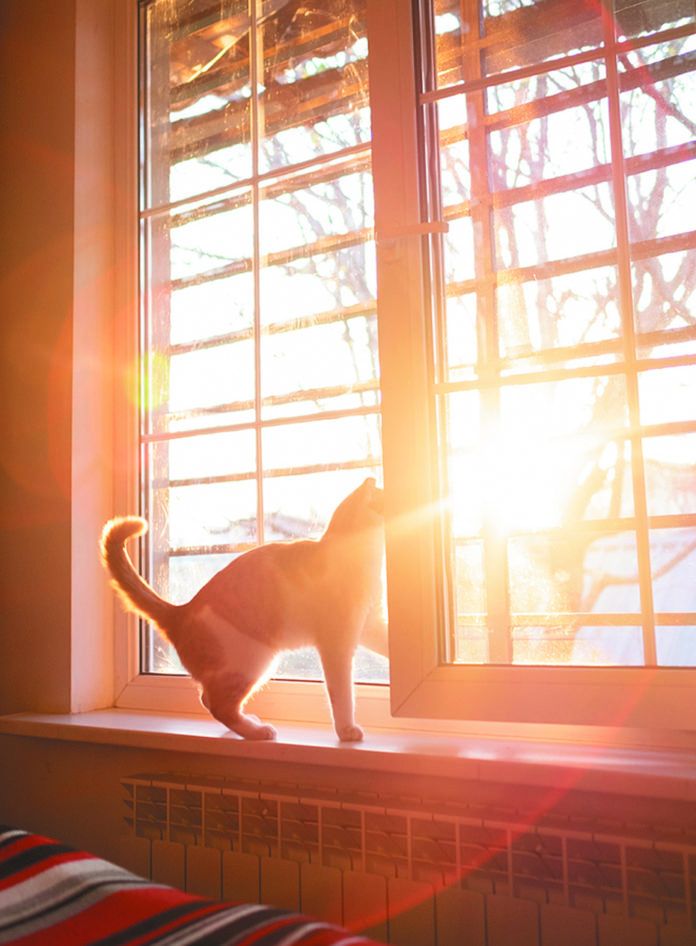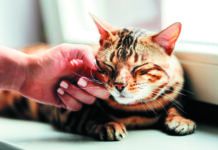You know the cat doesn’t really have anyone’s tongue, nor does it have nine lives. (Leave it to a line in Shakespeare’s Romeo and Juliet to keep that one going.) And no one actually believes a sleek, velvety black cat can be bad luck. But there are some other things commonly said about cats that people think are true when they’re not. Here’s a look at five of them.
1. Cats are nocturnal. Even though your own particular cat may have a penchant for wandering the house in the wee hours, cats are not biologically nocturnal. They are crepuscular, meaning they are hard-wired to be most active during dawn and dusk. (The word “crepuscular” comes from the Latin word for twilight — crepusculum.) Many crepuscular animals (like lions) are believed to have evolved to take advantage of those times when temperatures are coolest in their desert habitats.
It should be noted that while many cats like to wake their owners at dawn — one of their peak activity times — a lot of cats adapt to their human caregivers’ patterns of sleeping and waking. They can be more in sync with us than we give them credit for.
2. Cats and milk go together. No they don’t, unless it’s their own mother’s milk when they are kittens. Many cats like whole cow’s milk because of its high fat content. But believe it or not, a lot of cats are lactose intolerant. Milk and other dairy products end up leading to an upset stomach and subsequent vomiting and diarrhea. Felines need to stay hydrated, like other animals, but the most healthful bet for that is water.
3. Purring always indicates happiness. Cats do purr when they’re happy — and also when they’re in pain. It is theorized that the low frequency of purring vibrations inside a cat’s body can ease breathing and in that way help the animal to get a handle on her pain.
A cat might purr when she wants something from you, too. In that case, the purring will contain a high-frequency sound. “Feeeed me!”
Finally, sometimes a cat purrs when she’s feeling annoyed. If she’s purring and swishing her tail at the same time while you’re petting her, for instance, she’s not feeling good about it. Time to back off.
4. Pregnant women should not be around cats. This myth is based on the fact that cats can shed a harmful parasite in their feces called Toxoplasma gondii. Contact with this parasite can cause an illness called toxoplasmosis. Accidental ingestion, say, if a pregnant woman doesn’t wash her hands carefully enough after tending to the litter box, can set up an unborn child for serious health problems, including blindness.
But the Centers for Disease Control and Prevention says it’s fine for pregnant women to have cats. They just recommend the following:
- Avoid changing the litter box, if possible. If that’s not possible, pregnant women should wear disposable gloves and wash their hands with soap and water afterwards.
- Keep cats indoors.
- Avoid touching stray cats, especially kittens, and do not get a new cat while pregnant.
- Wear gloves when gardening and during contact with soil or sand because it might be contaminated with cat feces that contain Toxoplasma. Wash hands with soap and water after gardening.
5. A cat can steal a baby’s breath. The idea that a cat can kill a sleeping infant by taking its breath, possibly by smothering it, persists. People believe cats wants to snuggle up against babies because they like the smell of milk on their breath or are jealous of newborns and want to usurp their place in the home, thus getting a little too close and suffocating very young children in the process. This belief has been making the rounds for hundreds of years. In 1791 in Plymouth, Massachusetts, the Annual Register stated that “A child of eighteen months old was found dead…and it appeared, on the coroner’s inquest, that the child died in consequence of a cat sucking its breath, thereby occasioning strangulation.”
Of course, in 1791, babies died for all kinds of unknown reasons; cats made convenient scapegoats. Granted, you should never allow a cat in a crib with a child, just as you wouldn’t allow any item of clothing or other loose object that could obstruct breathing. But the idea that your cat is going to go after your baby to suck the life out of it is completely unfounded.





Who knew! I’d never even heard the word “crepuscular” before, or known that cats are typically most active at dawn and dusk. Fortunately my two quickly adapted to my schedule soon after they were adopted at 8 weeks. But they’re still doing their own thing when it comes to naps. Me: 0 to 1. Them: Impossible to keep score.